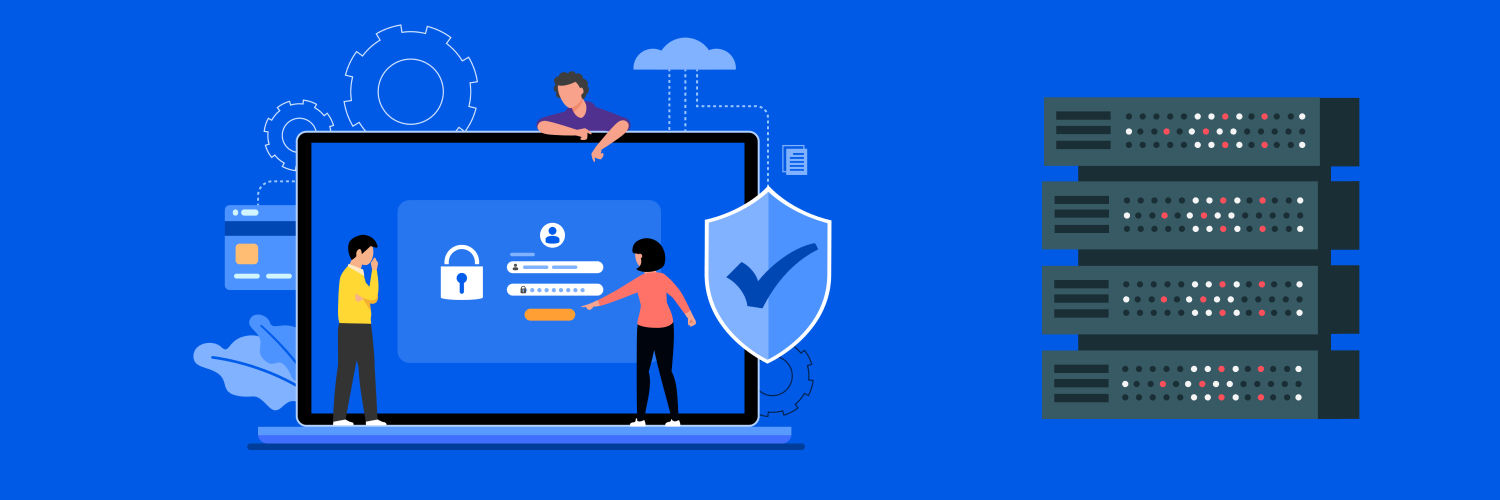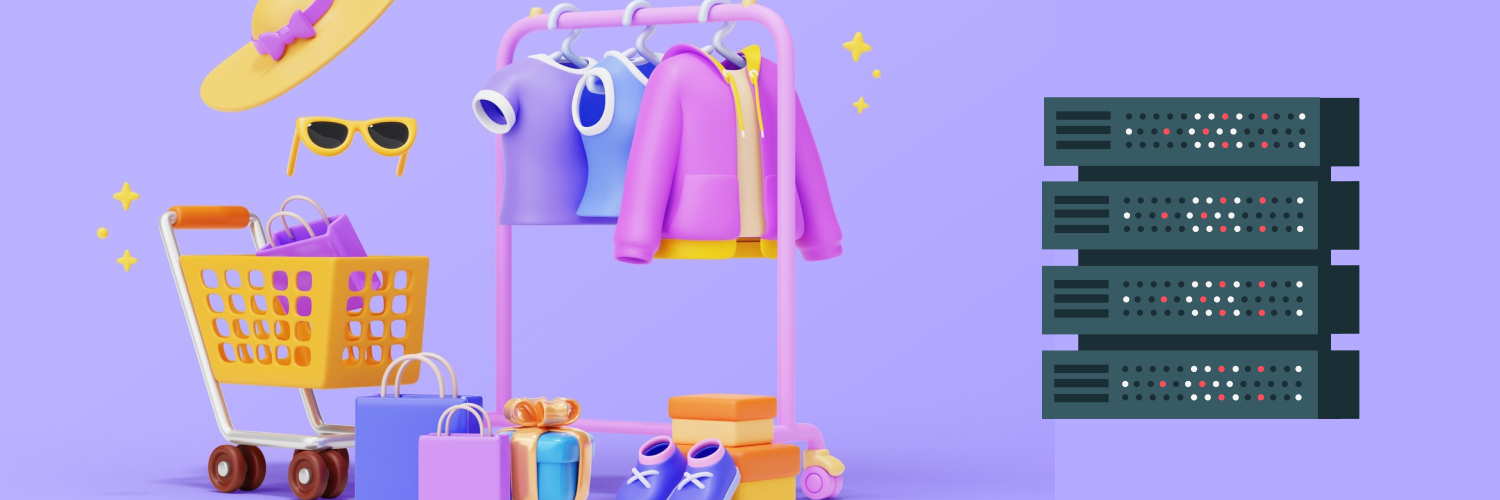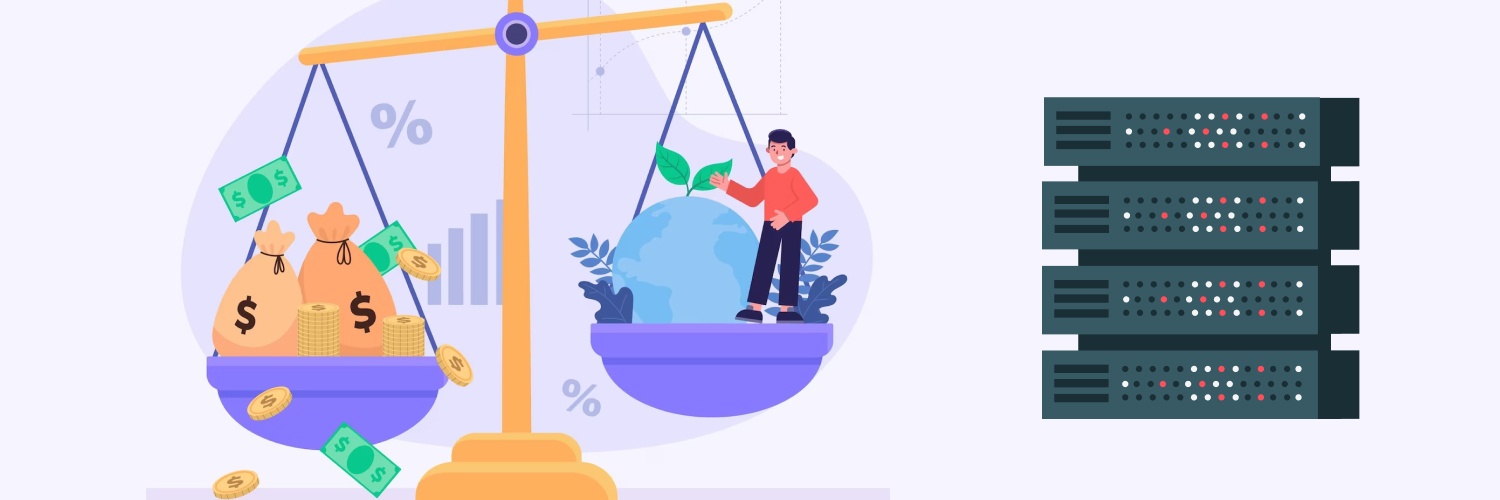Large-scale Web Scraping For Your eCommerce Business
Data has become critical to helping organizations make business decisions. It’s no longer about following your gut to figure out the current state of the market. Instead, companies are now looking to reap the value of the information held by their organization and in the public domain. Large-scale web scraping is a great way for eCommerce businesses to collect a lot of information quickly to help them remain competitive and provide better customer service.
What Is Web Scraping?

Web scraping involves launching automated processes to pull information from websites. The data displayed on a website may be in a format that makes it easier to collect and use. For example, you can capture information, copy it to a comma-separated values (CSV) file, and then upload it to a database.
It’s one thing to copy basic snippets from a web page. However, if you’re looking to collect large data sets from the web for eCommerce purposes, you’ll need more than a few robots built with Python. First, you’ll need to set up an infrastructure capable of scaling with your data needs. Next, you’ll have to find the best eCommerce proxy and decide how your organization will manage the need to store and process large amounts of data quickly.
Leveraging data to benefit your eCommerce business and guide company decisions requires investing in technology capable of handling your large-scale web scraping needs. You’ll also need multiple scrapers running simultaneously, supported by a robust framework requiring minimal human intervention.
How Can Large Scale Web Scraping Help Your eCommerce Business?

Companies can leverage large-scale web scraping for many different purposes. For example, you can use data scraping tools to copy information from competitor websites like product or pricing information. It’s also possible to collect information on potential customers that help you find new leads or suppliers.
Here are a few more reasons why you should consider setting up eCommerce proxy jobs to handle web scraping on a large scale:
- Your business can set up more precise and targeted eCommerce marketing strategies using the data gathered.
- Web scraping helps you pull in customers from places you might not have been familiar with otherwise.
- Your eCommerce business can locate new products to sell that fit into your particular niche.
- You can monitor the price changes of competitors and make quick adjustments if necessary.
- You can locate influencers to promote different products from your site.
- You can find new keywords to direct web searchers to your eCommerce store.
What Are Web Proxies?

Before we touch on web proxies, let’s go over IP addresses and how they affect web scraping. IP addresses get assigned to any device connecting to the internet, giving that session a unique identity. Proxies are third-party servers web scrapers use to route requests to websites. The proxy server provides the web scraper with an IP address, allowing the automation to work anonymously.
Proxies are essential to eCommerce web scraping for the following reasons:
- Proxies make it easier for your web scraping technology to crawl around websites with less chance of detection, meaning your IP address is less likely to get blocked.
- Proxies let your organization make large volumes of requests to target websites without getting flagged and banned.
- Proxies allow web scrapers to send requests from a specific device or geographic region, which changes the data presented to you. That’s especially important to eCommerce users looking for product data in a particular area.
- Proxies help your automation navigate around blanket IP bans.
- Proxies allow your organization to set up unlimited concurrent sessions for one or more websites.
You’ll need a proxy service to manage the different proxies used for your data collection project. For example, companies like Rayobyte offer a variety of proxy types and services your company can use to establish a large-scale web scraping project capable of evading antibot defenses and handling multiple parallel requests.
Proxy vs. VPN
A VPN routes web traffic through a server, usually encrypted. Companies typically use a VPN if they want to hide their identity. The ISP only sees the VPN information versus a user machine.
What is a proxy pool?
You need more than one proxy to establish large-scale web scraping processes. Proxy pools are used to split web traffic when routing your data requests. The following factors determine how large of a proxy pool you’ll need:
- How many requests you’ll need to make per hour to support your eCommerce business
- The number of websites you’ll encounter that have established more sophisticated antibot measures
- What type of proxies you’ll use, such as a data center or residential proxy
- The quality of the proxies you choose to support your data scraping needs
Proxy options for eCommerce
Below is a breakdown of three different proxy types, each with individual pros and cons:
- Datacenter: Datacenter proxies are not tied to a specific ISP. Instead, they’re typically made available through data centers that offer you a way to hide your IP and maintain the anonymity of your web scraping requests. Data center proxies may get flagged more easily by some websites with firewalls. If you use a data center proxy, make sure your provider can set you up with IP addresses that haven’t been blacklisted.
- Residential: Residential IPs are given to homeowners by an ISP. These addresses are associated with specific devices, and websites usually accept residential IPs as legitimate addresses. Using a residential IP makes it easier for your web scraping automation to imitate human behavior. This benefit means it usually costs more to purchase and maintain residential proxies.
- Mobile: Mobile proxies come from IP addresses set up by a mobile cellular provider for a device like a tablet or a smartphone. The IP address gets masked when you use one to connect to an IP address. They function similarly to a residential proxy. It’s harder to detect mobile proxies because they use dynamic IPs. Mobile proxies are ideal for collecting information from social media accounts or accessing region-specific content.
You can figure out how many proxies are needed to support your eCommerce needs using the following formula:
Number of proxies = Access Request Attempts/Crawl Rate
The number of access requests you want to generate depends on the following:
- How many pages you need to crawl
- How frequently you want the web scraper to crawl a page
Many web pages limit the number of times a user can make a request to their site over a certain period. It’s a measure used to determine which users are human versus automated.
How Do You Set Up Infrastructure for Large-scale Web Scraping for eCommerce?

The architecture of your eCommerce web scraping project needs to scale so that you can get enough output from your robots. Because a company will likely scrape large amounts of text for eCommerce purposes, it would benefit from automating different functions. For example, certain web scrapers might be used to discover information, while others are designated for extraction.
Regardless of how you employ your web collection automation, you’ll need proxies to manage the IP addresses used to make web page requests. Your extraction web scrapers will need more resources than those employed for discovery. Let’s look at how you can best support your data collection efforts.
Select a proxy provider
Your choice of proxy provider will directly impact the effectiveness of your web scraping efforts. Here are some factors in evaluating when deciding which proxy provider to work with for your eCommerce business:
- Ability to provide anonymity: You want a provider capable of hiding the origin of the web scraper and preventing IP and DNS leaks. It’s also vital that the IPs provided don’t appear on blacklists.
- Location access: Look for a provider who can provide IP addresses in specific regions or countries. It’s also good if they don’t charge you extra or force you to deal with additional restrictions.
- Cost: Evaluate how much you’re paying to gain access from proxies through a subscription or other pricing plan.
- User-friendliness and customer service: Evaluate how easy it is to purchase, configure security settings, and run eCommerce proxy jobs. Also, account for the amount of support they offer and their willingness to get back to your eCommerce business quickly about any issues.
- Uniqueness: Look at how many distinct IP addresses the proxy provider offers.
- Scalability: You need proxies that grow fast enough to accommodate a rapidly expanding network to support your eCommerce data collection endeavors.
- Quickness: Account for the speed at which a proxy network responds to a connection request.
- Success rate: Evaluate how quickly the proxy nodes successfully return responses to multiple connection requests.
Figure out how to overcome security obstacles
A big part of successful web scraping on a large scale for eCommerce involves understanding where you might encounter obstacles. You’ll need a plan of attack to overcome those roadblocks.
The typical web page has at least some security measures to block automation from extracting data. You need to learn how websites identify Rayobyte’s Web Scraping APIs to avoid having yours flagged and blocked:
- IP address: A web server checks to see if the IP address used by your web scraper comes from a data center or residential proxy. Sometimes sites automatically block data center proxies because they assume the user is not a human. It’s easier for residential proxies to get around an IP block.
- CAPTCHA: Some websites use a challenge-response test asking your web scraper to identify specific pictures or fill in code text. They’re effective at blocking robots because most aren’t built to bypass CAPTCHA.
- Cookie usage: Your web scraper should mimic the actions of a real user. If it goes directly to a specific product page, the website might recognize it as automation and refuse to provide an authentication cookie. Going through the main page and navigating the URLs can help your robot get past this security measure and receive a cookie.
- Headers: Many sites look for inconsistencies in the information in the headers of your web scraper. Anything that might look off, like the location or time zone, can lead to getting blocked.
- Inconsistent behavior: Websites look for abnormal behavior patterns like rapid button presses and nonlinear mouse movements. Another red flag for sites is starting from an inner page without bothering to collect a cookie.
Work through data collection and storage issues
Now that you’ve developed a prototype for eCommerce web scraping, including the proxy infrastructure, where will you store all the information? How will you make it accessible for processing? Below are some considerations to keep in mind as you scale up your data collection framework.
- Data warehousing: Large-scale eCommerce web scraping generates a large volume of data. Make sure you have constructed your data warehouse to ensure filtering, sorting, searching, and exporting information doesn’t burden users. It needs to scale to accommodate your growing data needs while providing adequate security.
- Changes in data collection patterns: You’ll likely need to adjust your web scrapers to accommodate changes like pulling information from a new field or modifications to the site’s UI. That way, you avoid malfunctions leading to an incomplete data set.
- Hostile technology: You might run into technologies like JavaScript or Ajax that make it harder to extract data, especially on a large scale.
- Data quality: The information collected by your web scrapers may not meet your initial data standards, which impacts the integrity of your eCommerce information. Operating in real time makes it more challenging to check the accuracy of data collected, which can lead to problems if you’re using artificial intelligence or machine language technologies.
Short-term vs. long-term storage
You also need to consider the balance of short-term vs. long-term storage needs. For example, if you want to turn incoming data into a readable format like JavaScript Object Notation (JSON), you can rely on short-term storage because you don’t need the raw data. Short-term storage is faster and can handle many incoming requests from your web scraper.
Below are some examples of short-term storage options:
- Redis
- RabbitMQ
- Apache Kafka
While these options typically come with limited functionality for selecting data, their speed gives you the performance needed to support large-scale data efforts. However, they’re not optimal for holding data for an extended period.
Long-term storage is a better option for handling raw HTML files that you need along with any processed data. You can send information directly to a parser to extract information for short-term storage, then move the rest on to your long-term storage options. Examples of services you might use for long-term storage include the following:
Your business can persist data to hard-drive discs versus relying on memory. Long-term storage options come with tools that support filtering entire data sets that you can then extract and display in an application.
Establish workflows for processing data
After figuring out how you want to store your information, you’ll need to develop workflows for parsing and extracting data. First, you’ll need a workflow to pull out HTML information and transform it into a readable format. From there, you can let your data engineering processes crunch data, pull insights, and conduct other business data functions.
However, when you’re working with data scraping at a large scale, things can get complicated quickly. Let’s look at some of the struggles you might encounter during data parsing:
- Changes in website layouts: If the page layout changes, that will affect the HTML structure. You’ll need to map out a process for quickly modifying your parser to support the updates.
- Stoppages: If you choose a third-party option to handle your parsing, you might need to shut it down when they make updates. That can force you to suspend your data processing efforts for an extended period, impacting your operations.
- Data set differences among parsing services: Another challenge with using a third-party parsing service is that each outputs information in a unique structure. If you’re working with several at once, you’ll need a way to standardize the input before feeding them to your internal systems.
You’ll have to make some hard decisions about how to deal with parsing. For example, will you use third-party services or invest in building and maintaining them in-house? If you decide to handle those processes externally, think about going with several providers so that you aren’t solely dependent on one to handle your data processing.
What Are Some Web Scraping Best Practices for eCommerce?

Following best practices when web scraping for your eCommerce business will go a long way toward helping you establish a consistent and lasting data collection process. First, you must think about the ethics of how you go about gathering information and evaluate the best way to use your technology. Ideally, your web scrapers won’t disrupt the normal flow of operations on web servers and will comply with any laws in place around automated data collection.
Public vs. private data
Some websites license the information on their page. You might be better off requesting permission from the owner to collect information or connecting through an API. It’s a good idea to stick with scraping publicly available data to avoid legal issues. You might want to review past cases involving web scraping and the outcomes.
Review the robot.txt file
Many websites have a robot.txt file in their root directory that outline what’s allowed. If there isn’t one, it’s up to you to set ethical limits on how your web scrapers crawl through sites and impact the availability of the pages to other users.
Avoid peak hours
Try to limit your web scraping to off-peak hours to avoid causing slowdowns on a website’s servers. Web scrapers can add a larger load to servers compared to individual users. You can limit user impacts by strategically scheduling when you launch your data collection automation.
Limit requests as much as possible
Evaluate how many requests you need to send every second or during the day to support your eCommerce business. It’s easier to scan static sites that don’t change much versus those that get updated frequently. You’ll need to figure out how to capture the correct information from dynamic pages without overloading the servers.
Use cached pages
Large web scraping projects generate a lot of requests that can strain web page servers. You can relieve some of that burden by revisiting cached web pages to reduce the number of URLs your web crawlers have to visit daily. Cached pages also make it easier for automation to perform routine scraping tasks.
Try to avoid images
Some web page images are copyrighted, meaning you could risk infringing on someone’s rights by capturing the information. It also takes a lot more bandwidth and space to store images versus text. Many images also contain hidden JavaScript elements that make data acquisition more complex.
Set up a URL library
Having a clean URL library available for your web scrapers makes them more efficient and helps you avoid getting your IP addresses blocked. You can learn to recognize and eliminate dead URLs or those designed to trap robots. For example, some websites contain links that are invisible to humans but easily located by robots. Websites use them to lure your web scrapers into capturing and blocking their IP address.
Taking the Right Approach to Large-scale Web Scraping

Web scraping is a great way for eCommerce businesses to capture data applicable to their business. The hardest part about setting up a large-scale web scraping project is knowing how to start. First, you must decide what type of proxies would best suit your company’s needs and select a proxy provider. With a suitable proxy, your web scrapers can become more efficient at crawling websites and gathering information.
You’ll also need to establish an infrastructure for your data scraping project and figure out how to deal with common web scraping issues like storing data, parsing and processing, and getting around website security measures.
It’s a good idea to follow best practices to help you deal with the complexities of large-scale web scraping. Establishing workflows for each required phase can help you achieve more consistent success. You also want to review the legalities of the information you’re collecting to avoid potential litigation.
The information contained within this article, including information posted by official staff, guest-submitted material, message board postings, or other third-party material is presented solely for the purposes of education and furtherance of the knowledge of the reader. All trademarks used in this publication are hereby acknowledged as the property of their respective owners.






